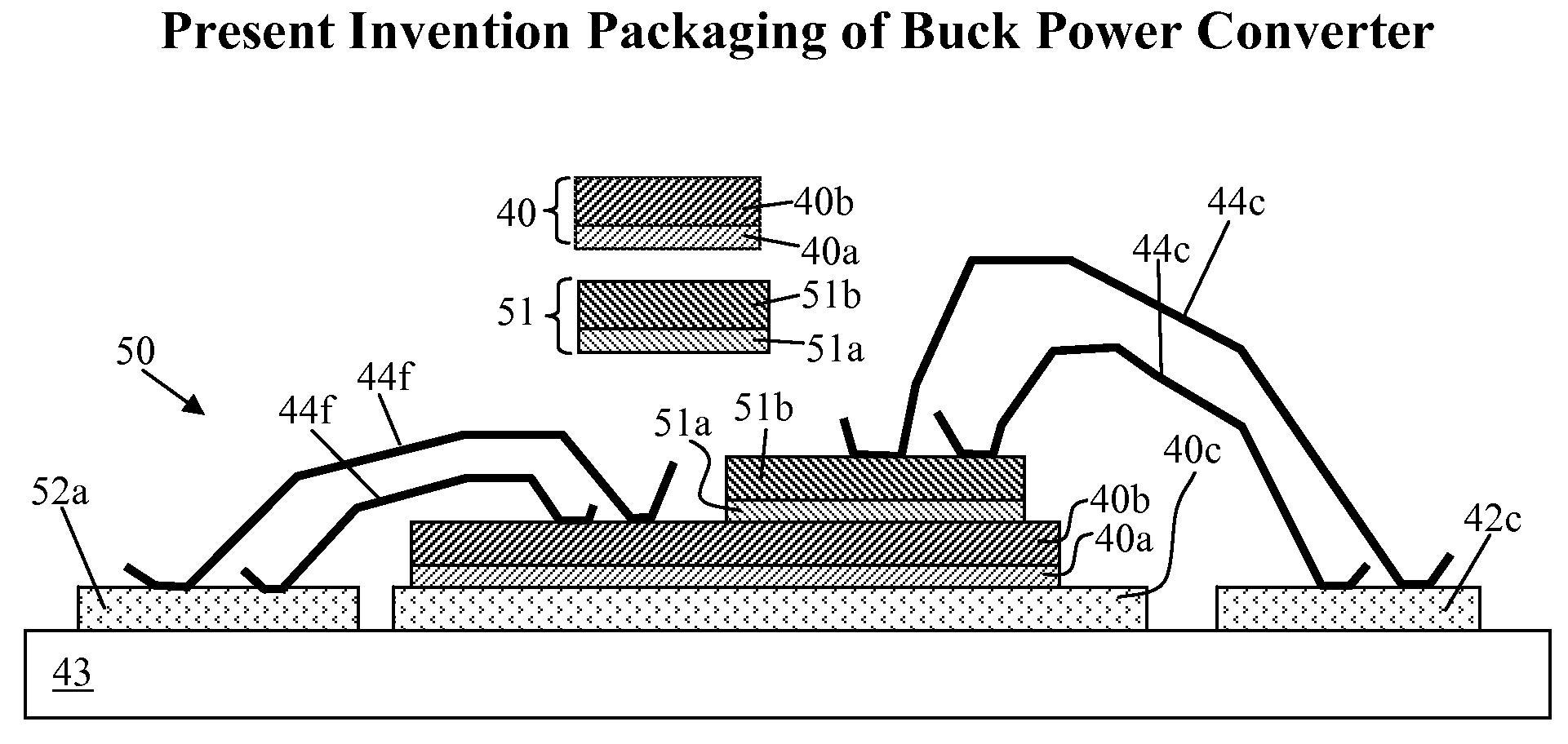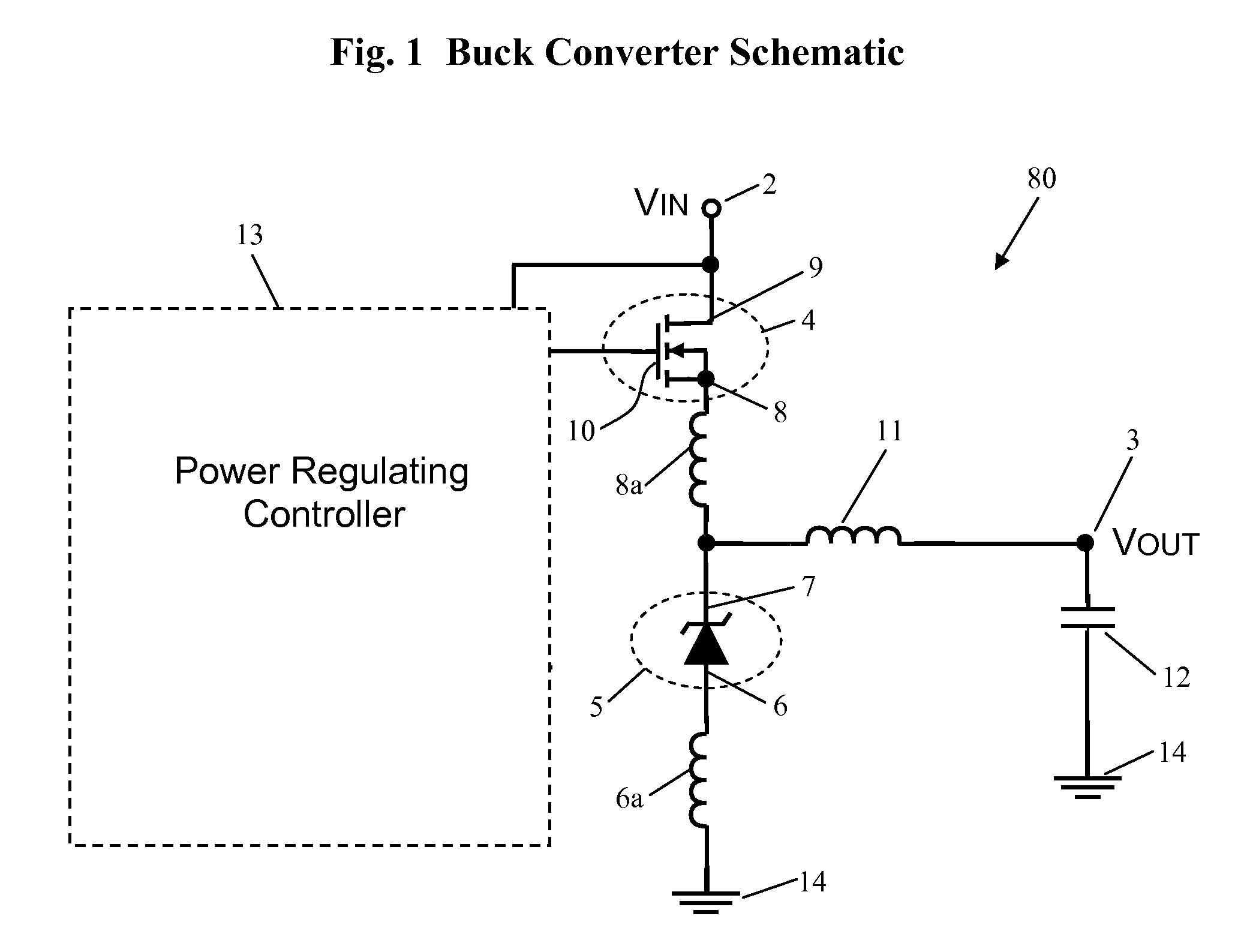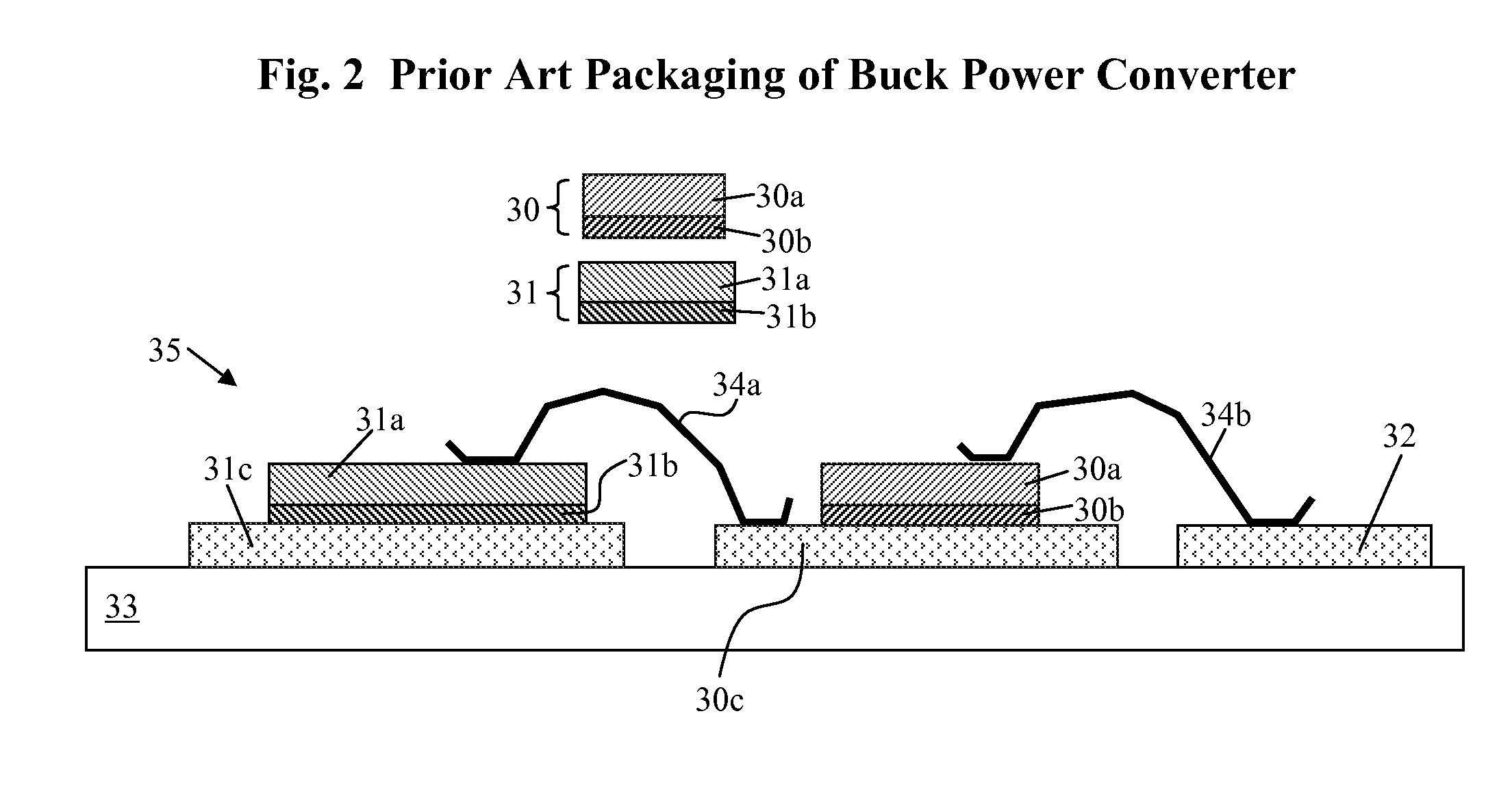Multi-die DC-DC buck power converter with efficient packaging
a buck power converter and buck power supply technology, applied in the field of physical level packaging of switching power supply and dcdc voltage converter, can solve the problems of increased demand for different voltage levels, non-standard lead frame, and large package siz
- Summary
- Abstract
- Description
- Claims
- Application Information
AI Technical Summary
Benefits of technology
Problems solved by technology
Method used
Image
Examples
first embodiment
[0026]FIG. 3A (side view), FIG. 3B (top view) and FIG. 3C (top view) illustrate the present invention multi-die package 45 and 45a with Schottky diode 30 and the vertical MOSFET 51 enclosed in molding compound 49. Compared with the prior art multi-die package 35 of FIG. 2 that uses two die pads (Schottky diode die pad 30c and MOSFET die pad 31c), the present invention only needs a lead-frame with first die pad 40c for packaging both the Schottky diode 30 and the vertical MOSFET 51 into one package to be mounted onto a PC-board 43. While the die-level device terminal configuration for the Schottky diode is the same between FIG. 2 and FIG. 3A (bottom substrate=cathode 30b, top surface=anode 30a), the die-level device terminal configuration for the vertical MOSFET is reversed between FIG. 2 and FIG. 3A in that:
[0027]FIG. 2: bottom substrate=MOSFET drain 31b, top surface=MOSFET source and gate 31a
[0028]FIG. 3A: bottom substrate=MOSFET source 52a, top surface=MOSFET gate and drain 52b
[...
second embodiment
[0031]FIG. 4A (side view), FIG. 4B (top view) and FIG. 4C (top view) illustrate the present invention multi-die package 50 and 50a with Schottky diode 40 and the vertical MOSFET 51 enclosed in molding compound 49. Compared with the previous present invention multi-die package 45 of FIG. 3A, the die-level device terminal configuration for vertical MOSFET is the same between FIG. 3A and FIG. 4A (bottom substrate=MOSFET source 51a, top surface=MOSFET gate and drain 51b). However, the die-level device terminal configuration for the Schottky diode is reversed between FIG. 3A and FIG. 4A in that:
[0032]FIG. 3A: bottom substrate=Schottky diode cathode 30b, top surface=Schottky diode anode 30a
[0033]FIG. 4A: bottom substrate=Schottky diode anode 40a, top surface=Schottky diode cathode 40b
[0034]As noted in FIG. 2B, the Schottky diode 30 die typically comes with its cathode 30b as the bottom substrate and its anode 30a on the top. Hence, to realize the various embodiments of the present inven...
third embodiment
[0036]FIG. 5A, FIG. 5B, FIG. 5C and FIG. 5D illustrate the present invention multi-die semiconductor package. As noted in FIG. 2 before, the Schottky diode 30 die typically comes with its cathode 30b as the bottom substrate and its anode 30a on the top. Hence, to realize the various embodiments of the present invention wherein the bottom substrate of the Schottky diode is its anode the Schottky diode must be custom made accordingly. In fact, reference (B) entitled “BOTTOM ANODE SCHOTTKY DIODE STRUCTURE AND METHOD”, as incorporated herein by reference, describes the structure of such bottom anode Schottky diode and how it can be made. However, as a simple alternative as illustrated in FIG. 5A, the Schottky diode can also be made with a typical process albeit into a flip-chip BGA (ball grid array) style Schottky diode 60 thus packaged with its cathode substrate 60b on the top and its anode solder balls 61 at the bottom. The resulting embodiments 65 and 65a, employing the packaging sch...
PUM
 Login to View More
Login to View More Abstract
Description
Claims
Application Information
 Login to View More
Login to View More - R&D
- Intellectual Property
- Life Sciences
- Materials
- Tech Scout
- Unparalleled Data Quality
- Higher Quality Content
- 60% Fewer Hallucinations
Browse by: Latest US Patents, China's latest patents, Technical Efficacy Thesaurus, Application Domain, Technology Topic, Popular Technical Reports.
© 2025 PatSnap. All rights reserved.Legal|Privacy policy|Modern Slavery Act Transparency Statement|Sitemap|About US| Contact US: help@patsnap.com



